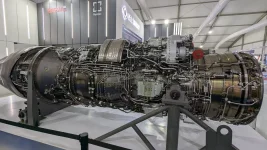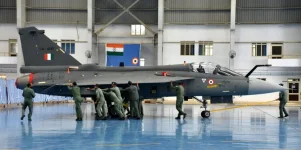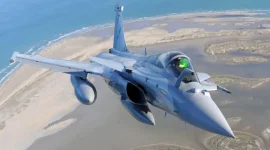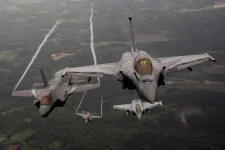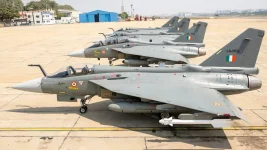- Views: 7K
- Replies: 24
The Indian Air Force (IAF) is reportedly re-evaluating its procurement strategy, showing renewed interest in a direct, off-the-shelf purchase of Russia’s Su-57E fifth-generation stealth fighter.
This potential acquisition is being viewed as a critical interim measure to counter emerging aerial threats in the region, particularly Pakistan’s reported interest in acquiring the Chinese J-35A stealth jet, while India’s indigenous Advanced Medium Combat Aircraft (AMCA) program progresses towards full-scale production, expected in the mid-2030s.
Currently operating with 31 fighter squadrons against a government-sanctioned strength of 42, the IAF is looking for practical solutions to bolster its capabilities.
This shift towards a direct purchase prioritises rapid deployment over the complexities of immediate large-scale local manufacturing.
Discussions about the Su-57E, known by its NATO reporting name "Felon," have been revived after the joint Indo-Russian Fifth Generation Fighter Aircraft (FGFA) program was shelved in 2018 over disagreements on cost, technology sharing, and the aircraft's capabilities.
Since early 2025, Moscow has been actively promoting the Su-57E to India, offering technology transfer incentives to compete with other international suppliers.
Sources indicate the IAF is considering acquiring a limited number of 40 to 60 Su-57E aircraft, enough to equip two or three squadrons.
This initial batch would be procured directly from Russia’s manufacturing facilities, with deliveries potentially beginning by 2028.
The Su-57E is known for its exceptional agility, supercruise capability (flying at supersonic speeds without using afterburners), and its design for high-altitude combat, making it suitable for operations over the Himalayas.
Furthermore, the aircraft can be integrated with advanced hypersonic weapons, such as the Kinzhal air-launched ballistic missile, providing a significant strategic advantage.
A key part of the plan involves upgrading these aircraft in India after their induction.
These enhancements, similar to the "Super-30" modernisation program for India's existing Su-30MKI fleet, would involve integrating locally developed systems.
This includes Indian-made weapons, advanced Uttam Active Electronically Scanned Array (AESA) radars, and indigenous mission computers.
This approach would ensure the new fighters are seamlessly integrated into India’s defence ecosystem without the high initial costs and long timelines associated with establishing a new production line from the outset.
While Russia has offered full Transfer of Technology (ToT) for licensed production at Hindustan Aeronautics Limited’s (HAL) facility in Nashik, this would require a larger commitment of over 100 aircraft to be economically viable.
IAF officials are reportedly cautious about such a large-scale investment, as it could divert funds from other high-priority acquisitions, most notably the ongoing tender for 114 additional Rafale jets under the Multi-Role Fighter Aircraft (MRFA) project.
While local production would boost indigenisation and create jobs, the immediate fiscal priority appears to be a smaller, direct purchase.
The IAF's long-term preference remains the expansion of its French-made Rafale fleet, a project valued at over $20 billion, due to the aircraft's proven combat record and interoperability with existing assets.
However, the Su-57E is seen as filling a specific niche as a dedicated stealth platform to counter the growing capabilities of regional adversaries, including China’s J-20 stealth fighter.
The Su-57E could also function as a "drone mothership," controlling unmanned aerial vehicles like the S-70 Okhotnik-B for high-risk strike missions.
Ultimately, the IAF does not envision acquiring a massive fleet of the Russian jets. Instead, the Su-57E is being positioned as a deterrent and a "bridge" to maintain a technological edge until the indigenous AMCA is ready.
A potential order of 40-60 units, at an estimated cost of $80-100 million per aircraft, would total between $3.2 billion and $6 billion.
This is considered a manageable expenditure that would plug a critical capability gap without derailing other vital modernisation plans.
If acquired, these advanced fighters could be deployed at forward airbases like Ambala or Hasimara by the early 2030s.

